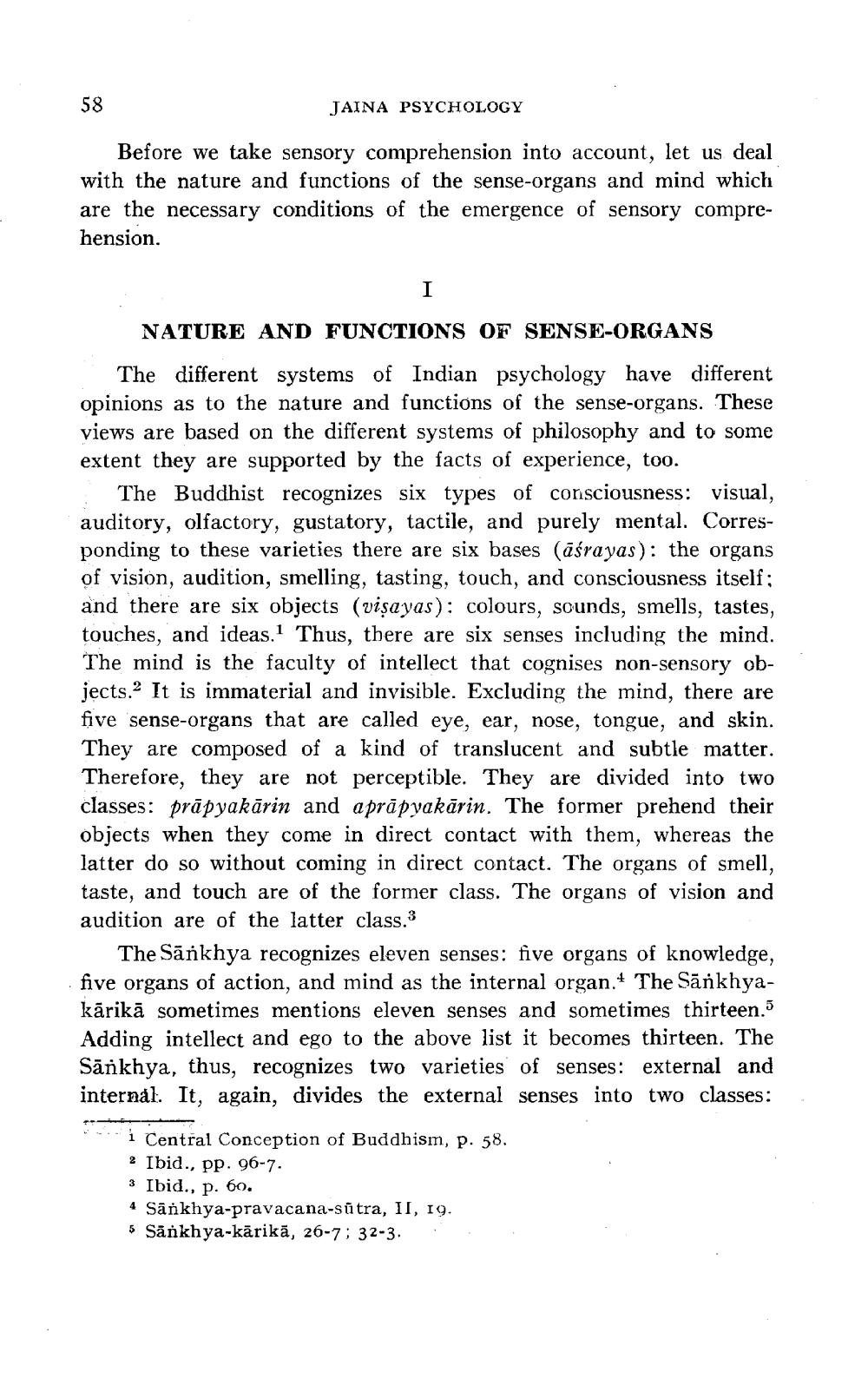________________
58
JAINA PSYCHOLOGY
Before we take sensory comprehension into account, let us deal with the nature and functions of the sense-organs and mind which are the necessary conditions of the emergence of sensory comprehension.
NATURE AND FUNCTIONS OF SENSE-ORGANS
The different systems of Indian psychology have different opinions as to the nature and functions of the sense-organs. These views are based on the different systems of philosophy and to some extent they are supported by the facts of experience, too.
The Buddhist recognizes six types of consciousness: visual, auditory, olfactory, gustatory, tactile, and purely mental. Corresponding to these varieties there are six bases (āśrayas): the organs of vision, audition, smelling, tasting, touch, and consciousness itself; and there are six objects (visayas): colours, sounds, smells, tastes, touches, and ideas. Thus, there are six senses including the mind. The mind is the faculty of intellect that cognises non-sensory objects. It is immaterial and invisible. Excluding the mind, there are five sense-organs that are called eye, ear, nose, tongue, and skin. They are composed of a kind of translucent and subtle matter. Therefore, they are not perceptible. They are divided into two classes: prāpyakārin and aprāpyakärin. The former prehend their objects when they come in direct contact with them, whereas the latter do so without coming in direct contact. The organs of smell, taste, and touch are of the former class. The organs of vision and audition are of the latter class.3
The Sānkhya recognizes eleven senses: five organs of knowledge, five organs of action, and mind as the internal organ.* The Sānkhyakārikā sometimes mentions eleven senses and sometimes thirteen. Adding intellect and ego to the above list it becomes thirteen. The Sānkhya, thus, recognizes two varieties of senses: external and internal. It, again, divides the external senses into two classes:
i Central Conception of Buddhism, p. 58. 2 Ibid., pp. 96-7. 3 Ibid., p. 60. 4 Sankhya-pravacana-sūtra, II, 19. 5 Sankhya-kārikā, 26-7; 32-3. .




